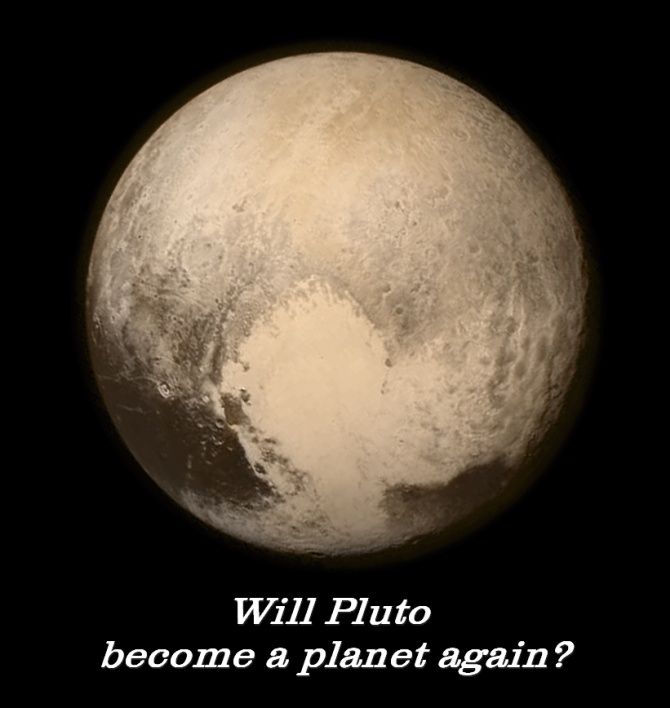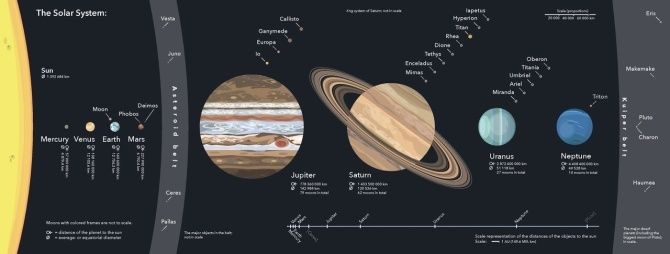After stripping it of planet status in 2006, some astronomers want to reclassify it once again, notes Devangshu Datta.

Pluto or 134340 MPC, as it's officially known, is a celestial object with an eccentric orbit. MPC stands for Minor Planet Classification.
But for 76 years, Pluto was considered a full-fledged planet. Now, if an influential cabal of astronomers has its way, it could be reclassified as a planet again.
However, another equally influential cabal of astronomers will fight to ensure it remains a minor or dwarf planet.
Meanwhile, most of the public think it a planet.
At one level, it's all about academics splitting hairs. Pluto will continue to do its thing regardless of what it's called.
At another level, this is a dead serious debate which represents opposing views on the philosophy of science.
The 'pro planet' school insists that the formal classification system has no utility.
The 'anti planet' school says this was an important decision arrived at by consensus.
In 2006, the International Astronomical Union voted on a resolution to demote Pluto.
It was the last day of the IAU's annual conference, and the pro planet school alleges that most of the 15,000-odd delegates had left and just 400-odd people voted to reduce Pluto to the status of a dwarf or minor planet.
The IAU applies three criteria to define planetary status.
The object must orbit the sun, which Pluto does, with an orbit that lasts 248 Earth years.
The object must be massive enough to have gravity pulling it into a roughly spherical shape. Pluto is round enough.
The third criterion is that the object must 'clear' the neighbourhood around its orbit. This is an astonishingly imprecise definition for a physical science.
It is most commonly accepted to mean that the object in question is massive enough to have pushed other objects out of its orbital path or taken them under control as moons, perhaps.
Pluto has five moons but it doesn't qualify because there are multiple other large objects in the Kuiper Belt, which it occupies.
Another factor that may have influenced the 'anti school' is that Pluto is small. Minor planets like Ceres and Eris are in the same league in terms of volume and mass.

The pro planet cabal has released a paper that examined astronomical records and conventions from 1801 to the present to claim that this concept of clearing the orbit has rarely been applied to classify planets.
That paper makes a strong case that planetary taxonomy evolved to outline geophysical differences between planets and minor planets.
Consensus is not a useful scientific criterion because consensus is often wrong -- the consensus before Galileo was that the sun moved round the Earth.
Planets, according to that paper, are planets because they are round, orbit the sun, have atmosphere, etc, and are smaller than stars.
Pluto meets all those criteria, which is not surprising, since the four co-authors have impeccable academic credentials.
The anti planet school in this taxonomic debate has equally distinguished scientists. They are also as strongly invested emotionally.
One of their leading lights, Mike Brown, uses the Twitter handle @plutokiller.
'Pluto is still not a planet. Actually, never was. We just misunderstood it for 50 years. Now, we know better. Nostalgia for Pluto is really not a very good planet argument, but that's basically all there is. Now, let's get on with reality,' says Brown.

Whatever you may think about the arcana of planetary taxonomy, Pluto is an unusual beast.
Its existence was deduced by mathematical analysis -- the observed orbit of Neptune was not in line with theoretical calculations.
Neptune had to be perturbed by a large object. Percival Lowell started looking for this elusive Planet IX in the early 1900s but died a frustrated man.
| Mass estimates for Pluto | |
|---|---|
| Year | Mass |
| 1915 | 7 Earth |
| 1931 | 1 Earth |
| 1948 | 0.1 (1/10) Earth |
| 1976 | 0.01 (1/100) Earth |
| 1978 | 0.0015 (1/650) Earth |
| 2006 | 0.00218 (1/459) Earth |
In 1930, Clyde Tombaugh, a 23 year old working in Lowell's observatory, nailed down Pluto. It was discovered that the new object had a strange orbit.
Most planets orbit the sun in the same plane -- think of a flat elliptical table with the sun surrounded by eight concentric rings to represent each planet's orbit. None of the orbits intersect.
Pluto's orbit is not on that plane. It swings from below the plane to above it. It also intersects the orbit of Neptune and, sometimes, is nearer the sun than Neptune.
At its most distant, it is a dim object that's seven light hours away from the sun. That it is worth a good deal of study is something all astronomers agree on.
The debate about classification is likely to rage on.













